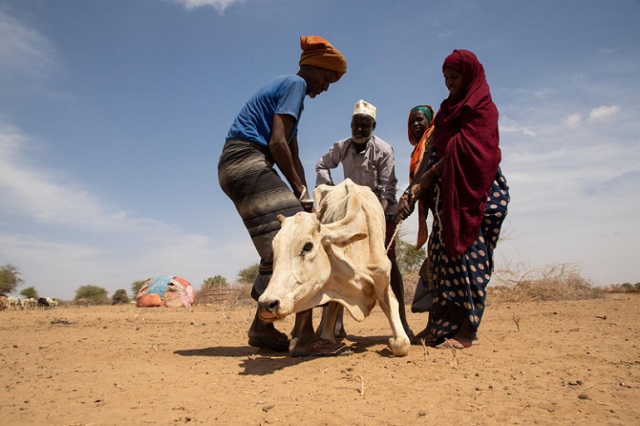
Nairobi, Kenya | Xinhua | The Food and Agriculture Organization of the United Nations (FAO) on Friday appealed for 14.77 billion shillings (about 130 million U.S. dollars) to provide time-critical assistance to highly vulnerable communities in drought-hit regions of Ethiopia, Kenya and Somalia.
FAO warned that an extended, multi-season drought is driving acute food insecurity in the Horn of Africa, with 12 to 14 million people now at risk as crops continue to wither and animals weaken.
FAO said its deputy director-general Beth Bechdol, subregional coordinator for eastern Africa David Phiri and director of emergencies and resilience Rein Paulsen have just wrapped up a visit to Kenya to raise awareness on the drought and see FAO’s vital response in action, including in Isiolo and Marsabit counties in the north.
Bechdol said drought cycles are intensifying and occurring with greater frequency, noting that an immediate humanitarian action to support farmers and herders is needed now.
“The international community has a narrow window to prevent a major humanitarian catastrophe here,” she said in a statement after visiting Kenyan communities where goats and cows are dying from lack of water and pasture.
A new analysis published on Thursday from the Food Security and Nutrition Analysis Unit (FSNAU) for Somalia shows that in Somalia alone, the number of acutely food insecure people is expected to increase from 3.5 to 4.1 million between January and March, if humanitarian assistance is not received on time.
Phiri said alarm bells have already been rung and scaled-up action is needed now to help avert the humanitarian crisis.
“FAO carried out anticipatory actions during the latter half of 2021 in Ethiopia, Kenya and Somalia to mitigate the impacts of drought on over one million rural people and so far a crisis has been mitigated. But much more is needed as the situation deteriorates and as crisis looms,” he said.
The UN food agency said resource-based conflicts are escalating as competition for water and pasturelands increases, and malnutrition rates are rising in affected areas of Ethiopia, Kenya and Somalia, highlighting the need to sustain the rural livelihoods that underpin peace and food security across the Horn.
“In a worst-case scenario in which the rains completely fail and agricultural-dependent communities do not receive adequate support, the number of highly food insecure people could climb to 15-20 million, with some worst-affected households facing “catastrophic” hunger conditions,” it warned.
*****
Xinhua
 The Independent Uganda: You get the Truth we Pay the Price
The Independent Uganda: You get the Truth we Pay the Price



